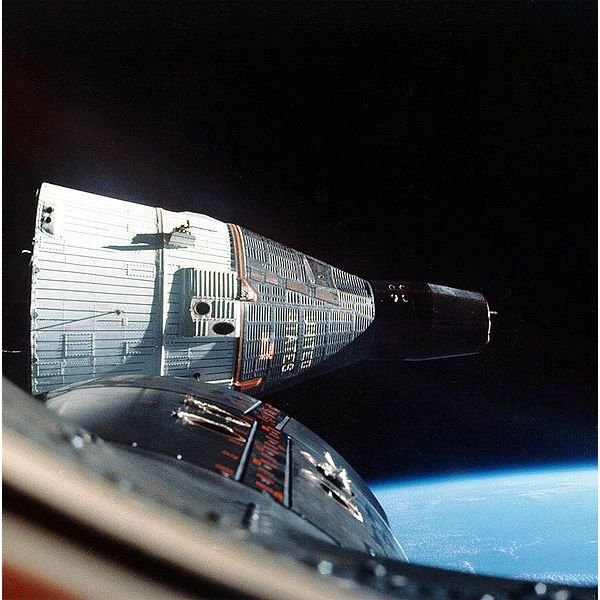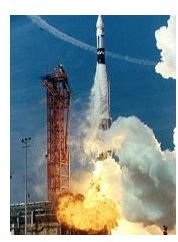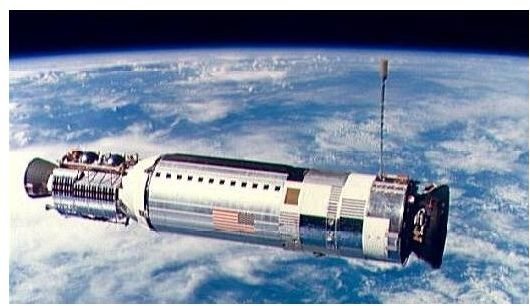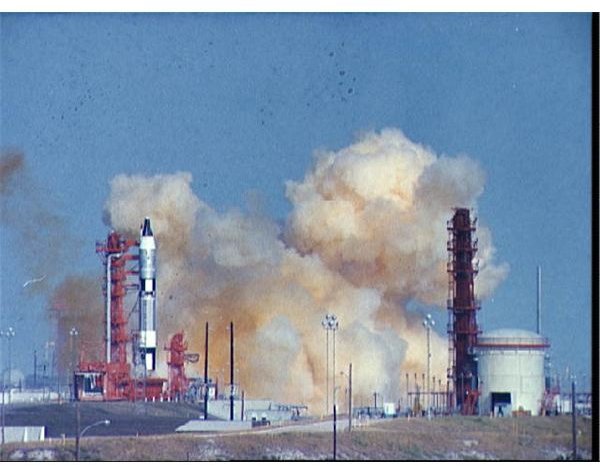Gemini Space Program: Rendezvous Achieved--Finally
A Reversal of Fortunes
Gemini VI sat on Pad 19 as its Atlas Agena target vehicle lifted off from Pad 14. Wally Schirra and Tom Stafford were ready to go for the first rendezvous and docking of two spacecraft.
But the rocket science fates had other ideas. Six minutes after liftoff, the Atlas Agena exploded. The mission was scrubbed.
Frank Borman and Jim Lovell were slated to take Gemini VII on a two week endurance cruise two months later, and Borman had an idea. He assaulted NASA officials with it.
Without an immediately available Agena, why could not two Geminis rendezvous and station keep? It took him weeks to convince officials of the merits of the concept. The major stumbling block was getting the pad ready quickly enough after the launch of VII to launch VI to meet its partner in space. Engineers worked the problem and said they could do it. So the twin missions were put into the program.
On Dec. 4, 1965, Gemini VII leapt towards space. Borman and Lovell would have about a week before they would have company, but they had plenty to do in the meantime. First task was to accomplish the station keeping with the Titan II second stage that Gemini IV had been unable to complete. Borman, armed with the knowledge of orbital mechanics Jim McDivitt had learned on IV, easily flew within 15 meters of the stage, but he decided that was too close.
The spent stage was tumbling and bucking as it vented gases, and Borman felt the stage was too unstable to remain in its vicinity. They had spent 15 minutes stationkeeping, so he fired his thrusters and moved away.
For the next six days, the two performed a variety of experiments, including becoming the first astronauts to remove their spacesuits and fly without them. It was considerably more comfortable, and necessary on long duration flights.
On Dec. 12, Schirra and Stafford entered Gemini VI—now dubbed Gemini VIA—for their rendezvous with VII.
But the rocket science gods weren’t through with VI yet.
It was a Sunday, and my wife and I had gone over to Cocoa Beach to watch the launch. There was a point on the beach that curved out into the ocean. From here you had a direct and unobstructed view of Pad 19. It was a gray day, about 55 degrees. But there was a brisk breeze off the Atlantic that made it feel like 35.
We watched with high anticipation as we listened to the countdown on a portable radio. “3-2-1-ignition.” Flames billowed from the engines…then disappeared. The Titan II sat still on the pad. I expected to see the two astronauts come hurtling out of the craft in their ejection seats, as that was the procedure for a pad abort.
Fortunately, wily Wally Schirra, seasoned test pilot, felt no movement of the vehicle, and so did not pull the D-ring that would have ejected them.
We were not the only ones who saw the shutdown. At that exact time, VII was passing over the Cape. Borman radioed down wanting to know what happened. Schirra told him they had ignition but then it just shut down. “But we’re not going anywhere today.” he lamented.
The problem turned out to be a dust cover that had been left in the engine. Three days later, VIA lifted off, and headed to keep VII company.
Twins in Space
Gemini VIA entered orbit almost 2000 kilometers behind VII, but in a lower orbit, so they began to gradually catch up. As they closed on VII, Schirra turned his spaceship at right angles to its direction of travel and changed the plane of its orbit to match that of VIIs. Later, he made a phase adjustment—that is, he raised the perigee (the low point of the orbit) to 224 kilometers. They were now only about 480 kilometers behind VII.
About four hours into the flight, Schirra circularized the orbit. At five hours and four minutes he sighted VII. Twelve minutes later they had pulled close enough that orbital mechanics no longer held sway and Schirra quickly moved in close to his companion.

They flew around each other, once coming within three-tenths of a meter. They flew nose to nose. They remained stationary to each other without touching the controls. Both craft were completely stable and maintained position.

The world’s first true rendezvous had been achieved.
The next day, Gemini VIA returned to Earth. Gemini VII continued its two week cruise. They had to settle for 12 days due to low fuel, but they still set a duration record.
Close to Tragedy
Neil Armstrong and David Scott watched from Gemini VIII as their Atlas Agena target vehicle soared majestically into the sky. It was a perfect launch. Forty-one minutes later, VIII vaulted towards space.

It took Armstrong just about four hours to come within sight of the Agena. At that time they were only 140 kilometers away from it. At five hours and forty-three minutes, they pulled within 46 meters, with zero relative velocity. The second rendezvous of two vehicles had been achieved.

Now Armstrong eased his spaceship forward towards the Agena’s docking collar. Slowly VIII slipped into it. Armstrong reported, “Flight, we are docked.”
Finally, docking had been achieved. Ground controllers were cheering.
But the elation would be short lived. Almost immediately, the con-joined spacecrafts began to roll. At first, Armstrong and Scott thought it was the Agena’s control system, which they could disable and control the combo with the Gemini’s system.
But that did not stop the roll. They had no choice but to undock.
Then the spaceship began to roll and tumble at a dizzying—literally—rate. Armstrong could not get it under control. Both men were getting dizzy and their vision blurred. They cut power to the reaction control thrusters.
Eventually they gained control of their ship, and discovered that thruster number 8 had failed open. The result was their fuel was below safe levels. That meant a return to Earth at the earliest possible time.
They had to splash down in the Pacific, far from any recovery flotilla. But there was one contingency ship just three hours from them. Still, the combination of the severe gyrations of their spaceship and the time on the water left the two nauseated.
Yet, they had achieved the world’s first docking of two spacecraft, and set the stage for the next steps towards the moon.
Credits
Pad abort: NASA
VIA and VII rendezvous: NASA
Rear view: NASA
Atlas Agena Liftoff: NASA
Approaching Agena: NASA
This post is part of the series: Rendezvous in Space–The Gemini Program
With President John Kennedy’s challenge to land a man on the moon by the end of the decade, NASA had to develop and prove the techniques of rendezvous and docking two spacecraft in orbit. That was Gemini’s mission. Along the way, five astronauts would take a stroll in space.
